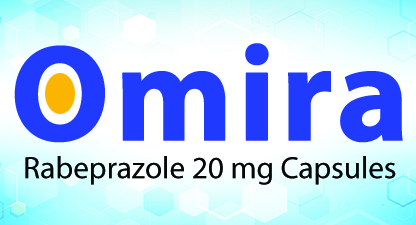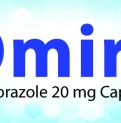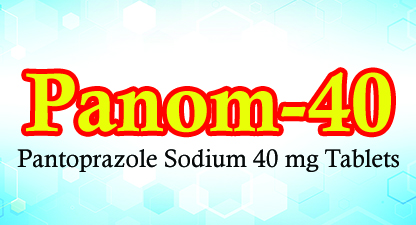OMIRA
Rabeprazole is an antiulcer drug in the class of proton pump inhibitors. It is a prodrug that suppresses gastric acid production in the stomach.
- Categories : Proton Pump Inhibitor
- Share Now :
A quick answer to hyperacidity,
Generic Name: Rabeprazole Sodium
Therapeutic Class: Gastrointestinal Agent
Pharmacological Class: Proton Pump Inhibitor
Composition: Each capsule contains Rabeprazole sodium IP 20mg
Pregnancy Category: C
Presentation: Available in the pack size as 10 tablets X 10 strips
Mechanism of action
Rabeprazole's mechanism of action involves the permanent inhibition of proton pumps in the stomach, which are responsible for gastric acid production. It is a prodrug - in the acid environment of the parietal cells, rabeprazole inhibits the H+K+ ATPase of the coating gastric cells and gastric acid secretion is suppressed.
Indications
- Reflux esophagitis
- Gastro esophageal reflux disease (GERD)
- Non cardiac chest pain
- NSAIDs induced gastritis
- Functional dyspepsia
- Peptic Ulcer Disease (PUD)
- Helicobacter pylori infection
- Zollinger-Ellison (ZE) Syndrome
Dosage
Route of administration: Oral
- GERD: 20 mg orally once a day up to 4 weeks
- Reflux esophagitis: 20 mg orally once a day up to 4-8 weeks
- Gastric (stomach) Ulcer: 20 mg orally once a day for 4-8 weeks
- Duodenal (intestinal) Ulcer: 20 mg orally once a day up to 4 weeks
- Zollinger Ellison Syndrome: 60 mg orally once a day
- Helicobacter Pylori infection: 20 mg orally 2 times a day, taken concomitantly with amoxicillin and clarithromycin for 7 days
Better efficacy if taken 30 minutes before meal.
Pharmacokinetics
Absorption: Absolute bioavailability is approximately 52%.
Protein binding: 96.3% (bound to human plasma proteins)
Metabolism: Hepatic
Route of elimination: approximately 90% of the drug was eliminated in the urine.
Half-life: 1-2 hours (in plasma)
Adverse Effects
The most common side effects include headache, nausea, and diarrhea. Others include rashes, flu-like symptoms and infections. (Including by the gastrointestinal pathogen Clostridium difficile)
Contraindications
Rabeprazole is contraindicated in the following populations and situations:
- People with a known hypersensitivity to rabeprazole, substituted benzimidazoles (which are chemically similar to rabeprazole, like omeprazole), or any other component of the capsule formulation (e.g. certain dyes)
Drug Interactions
- The acid-suppression effects of rabeprazole, like other PPIs, may interfere with the absorption of drugs that require acid, such as ketoconazole and digoxin.
- Two medications in the same class as rabeprazole can disturb the conversion of an anticoagulant medication called clopidogrel to its active metabolite.
- Concurrent use of rilpivirine, a medication used to treat HIV infection; decreases the absorption of rilpivirine.
Indications
- Reflux esophagitis
- Gastro esophageal reflux disease (GERD)
- Non cardiac chest pain
- NSAIDs induced gastritis
- Functional dyspepsia
- Peptic Ulcer Disease (PUD)
- Helicobacter pylori infection
- Zollinger-Ellison (ZE) Syndrome
Contraindications
Rabeprazole is contraindicated in the following populations and situations:
- People with a known hypersensitivity to rabeprazole, substituted benzimidazoles (which are chemically similar to rabeprazole, like omeprazole), or any other component of the capsule formulation (e.g. certain dyes)
Dosage
Route of administration: Oral
- GERD: 20 mg orally once a day up to 4 weeks
- Reflux esophagitis: 20 mg orally once a day up to 4-8 weeks
- Gastric (stomach) Ulcer: 20 mg orally once a day for 4-8 weeks
- Duodenal (intestinal) Ulcer: 20 mg orally once a day up to 4 weeks
- Zollinger Ellison Syndrome: 60 mg orally once a day
- Helicobacter Pylori infection: 20 mg orally 2 times a day, taken concomitantly with amoxicillin and clarithromycin for 7 days
Better efficacy if taken 30 minutes before meal.



